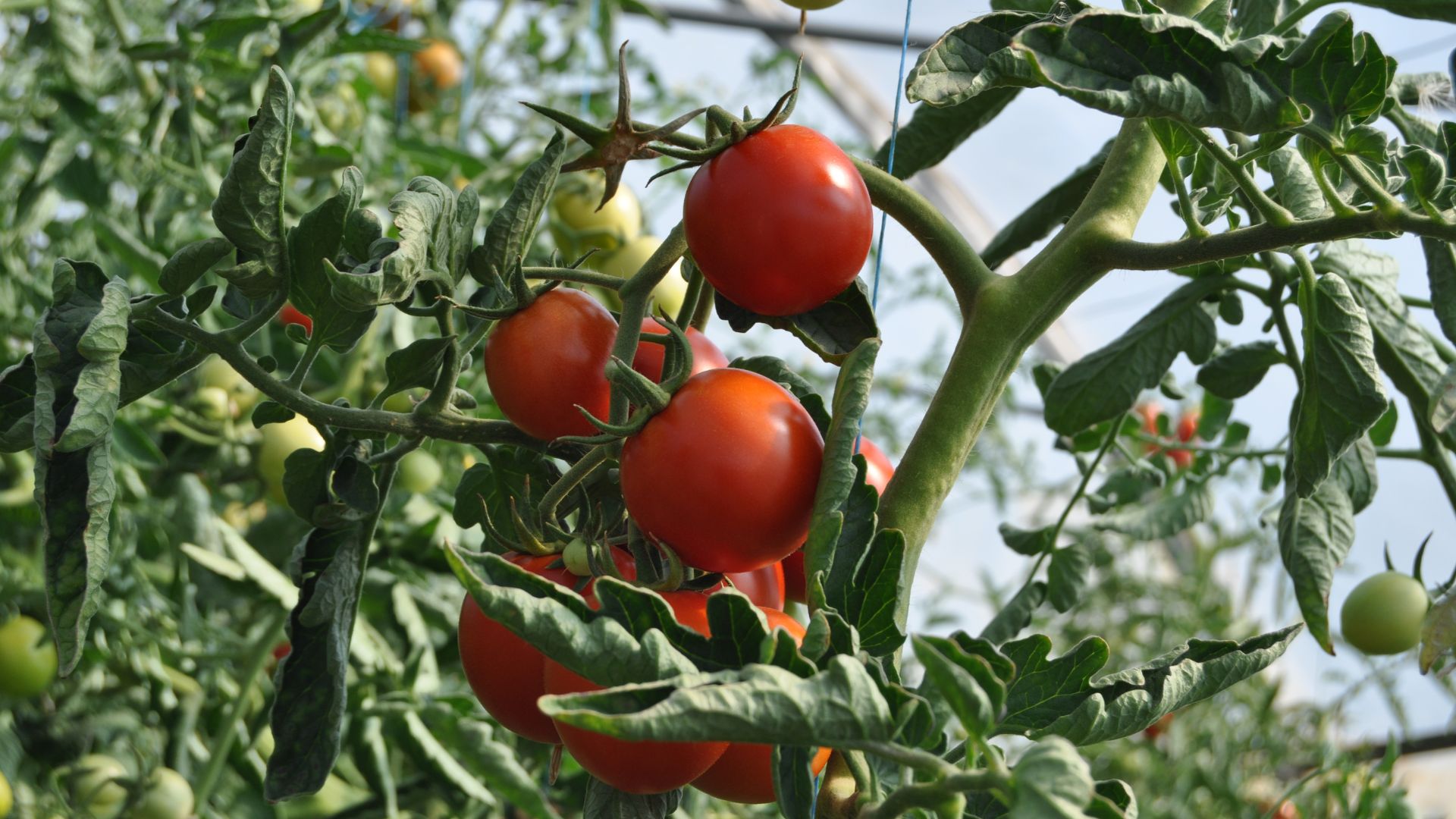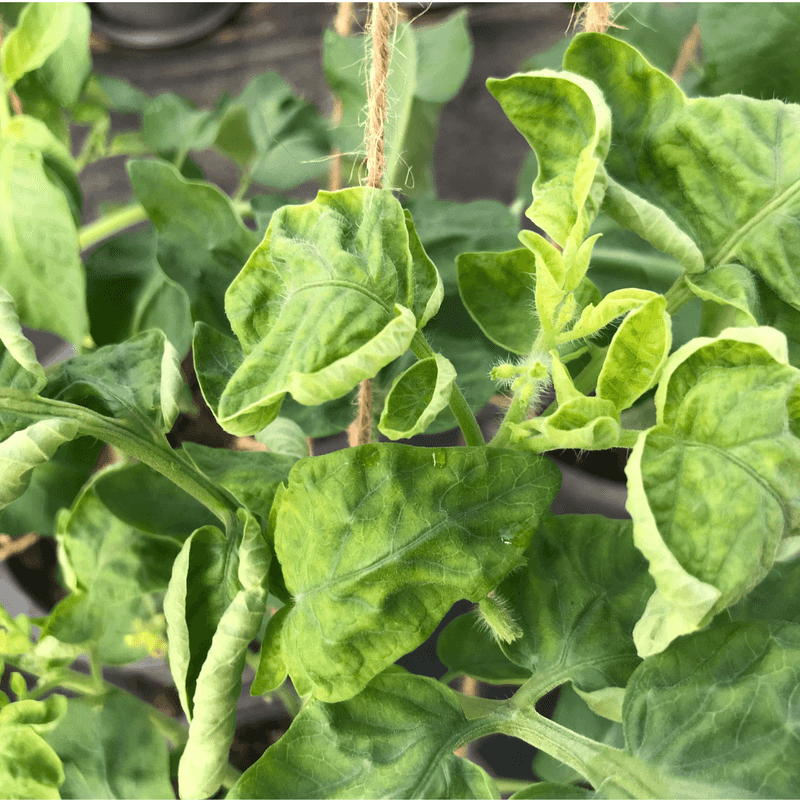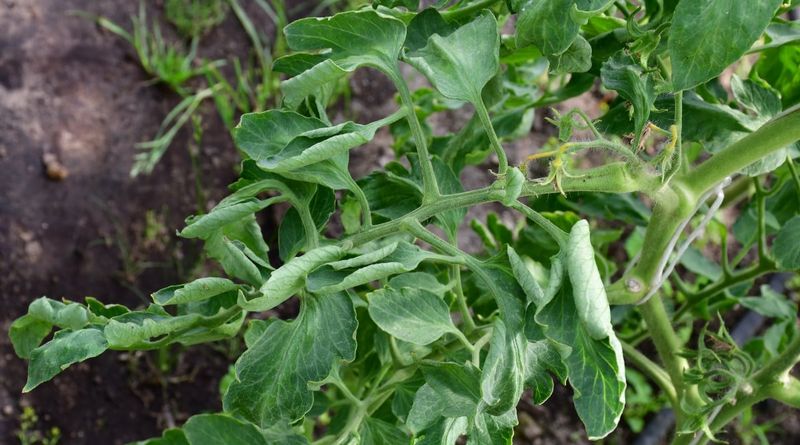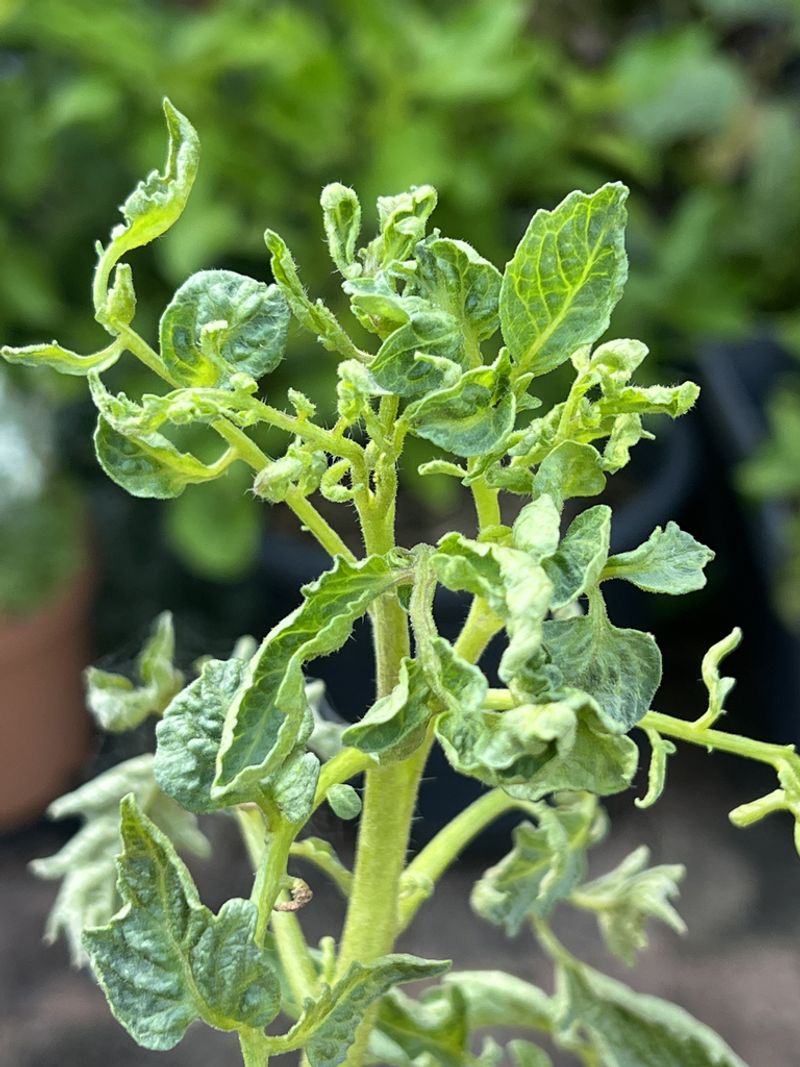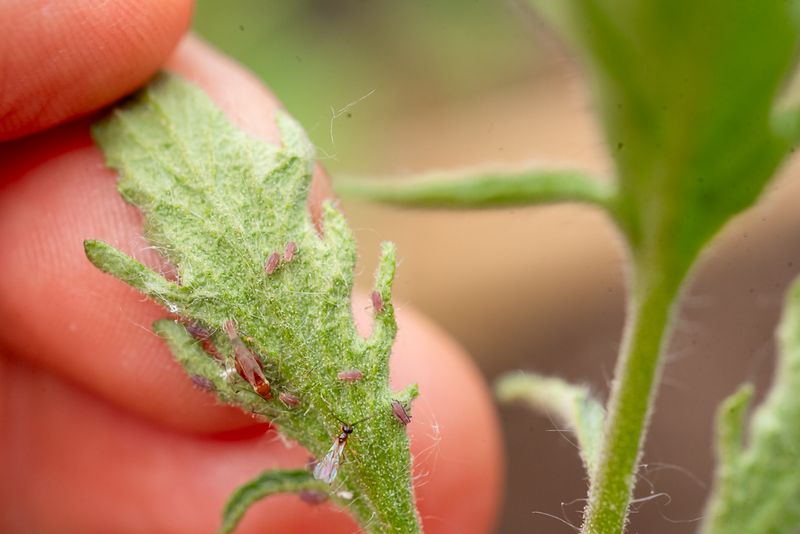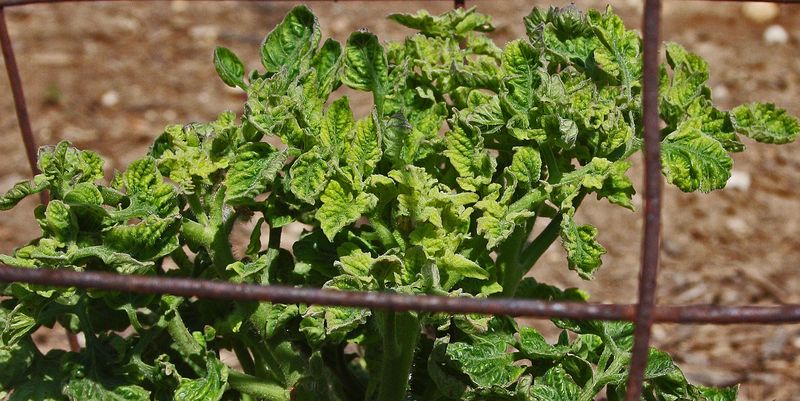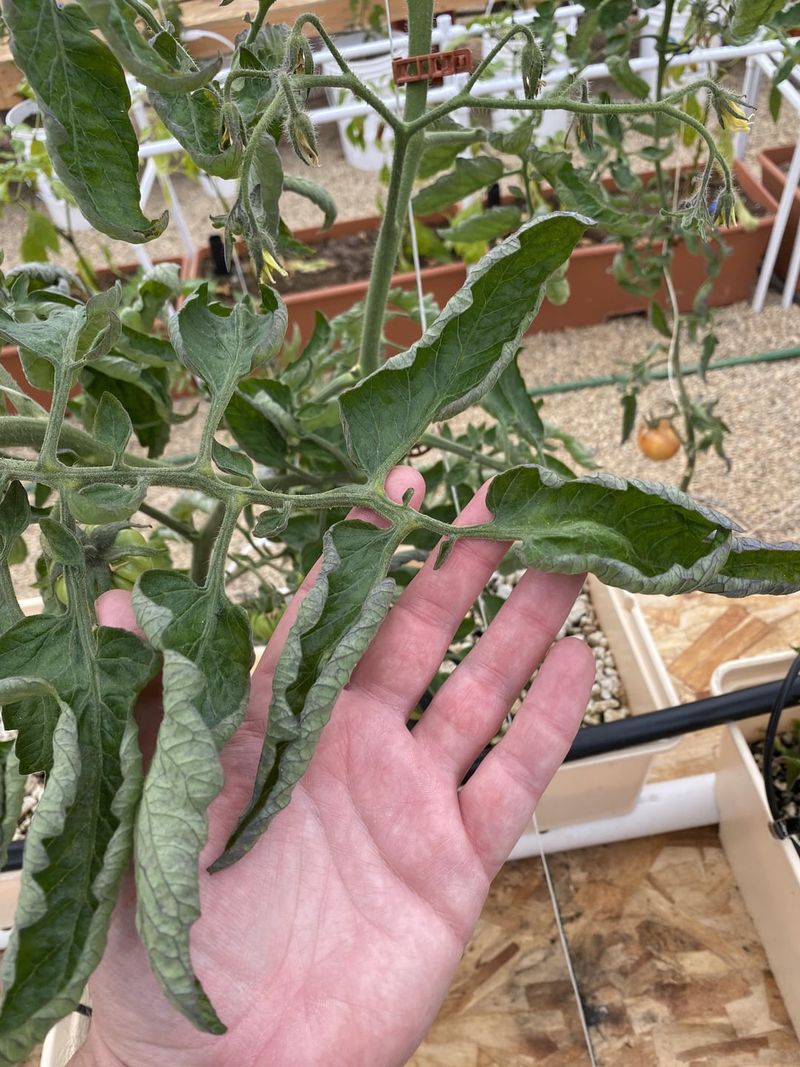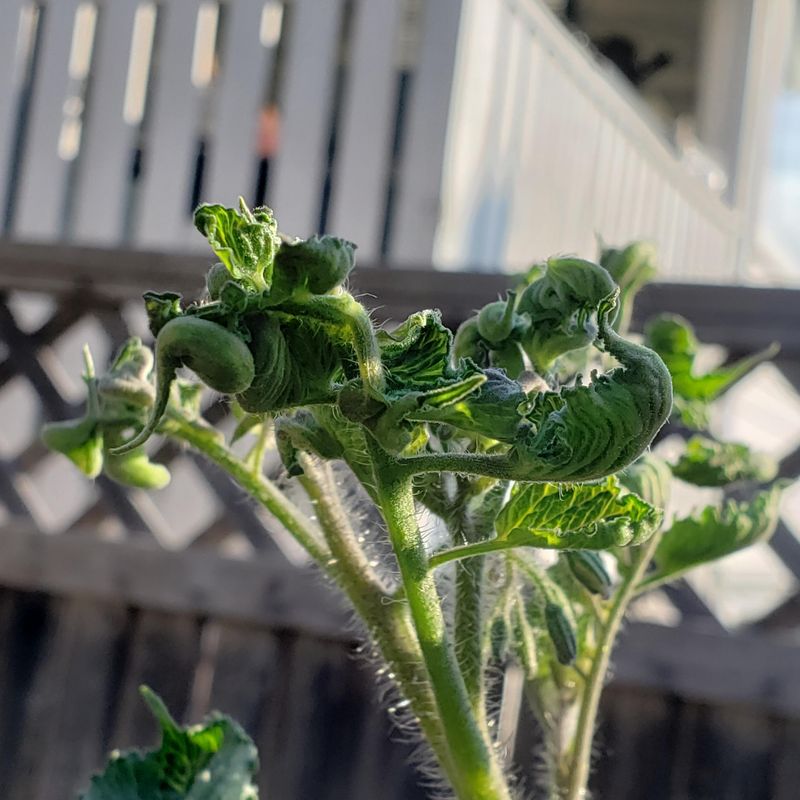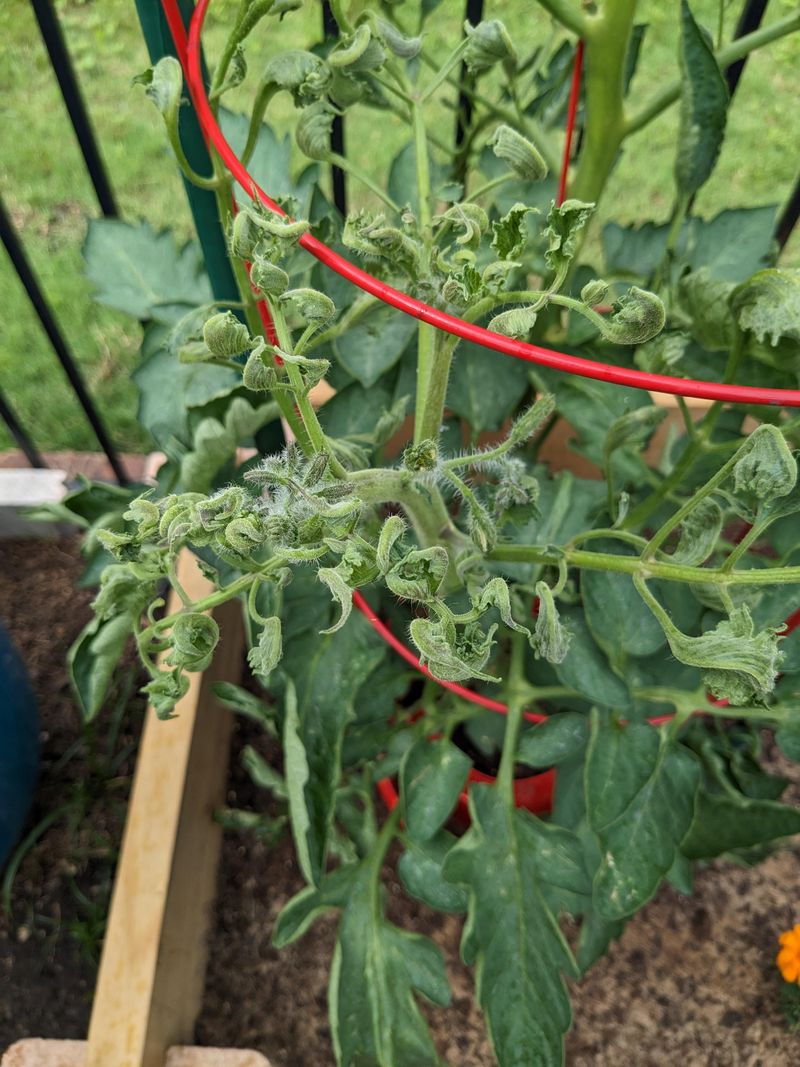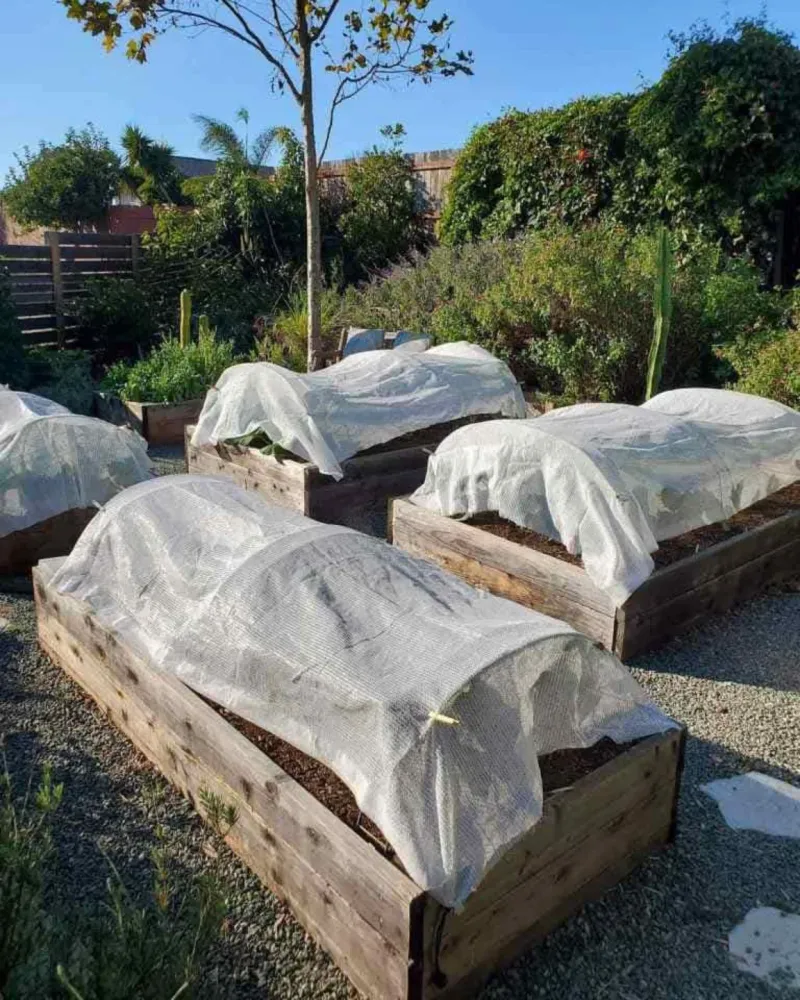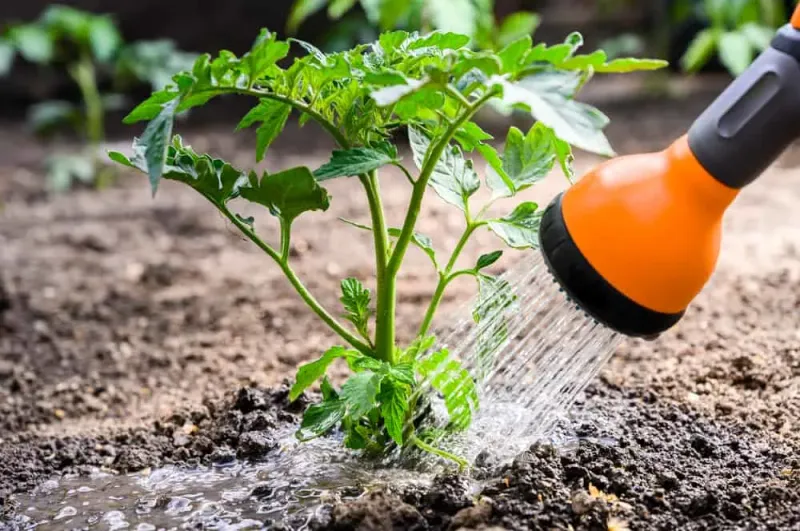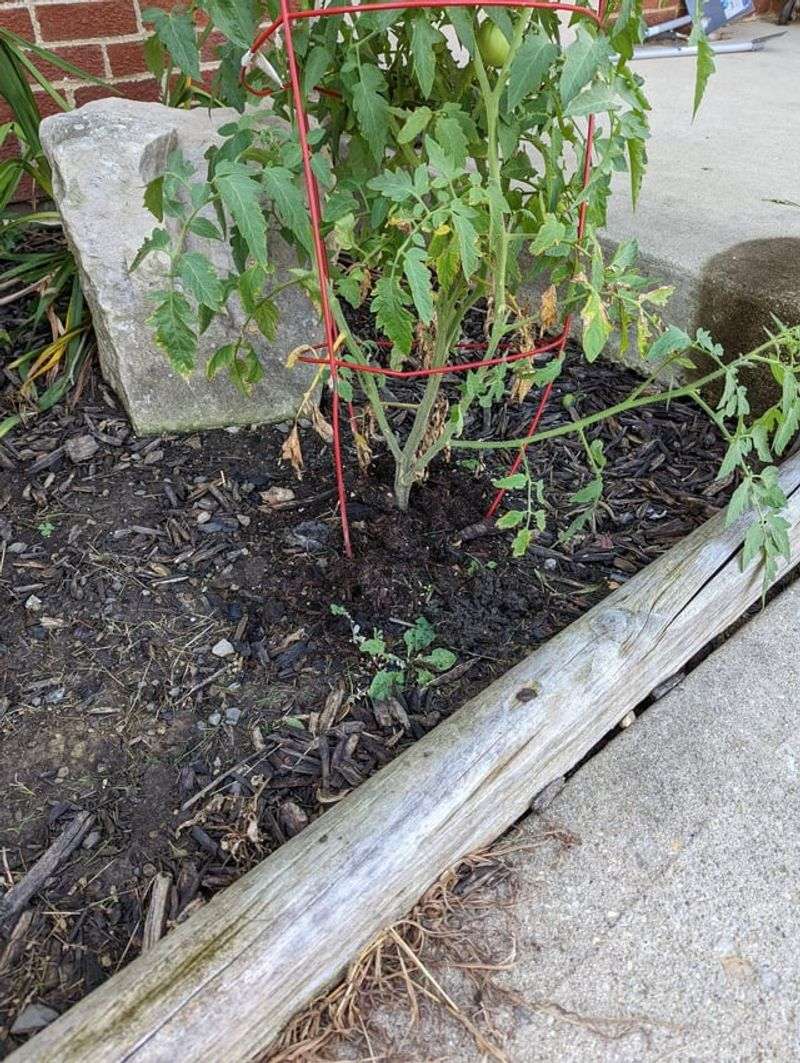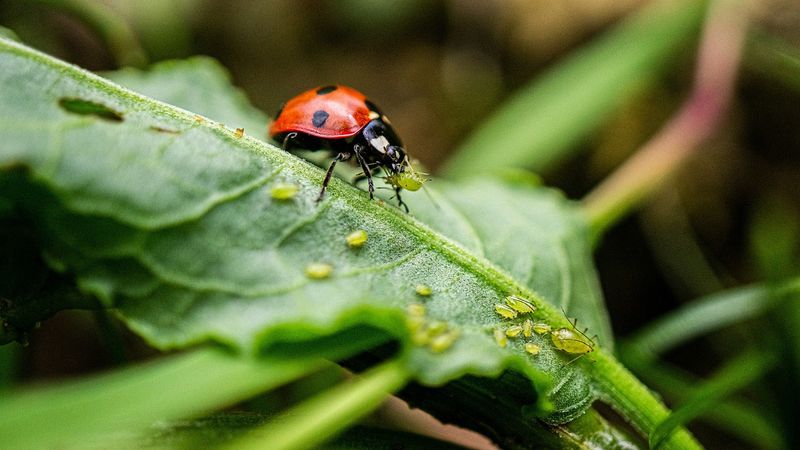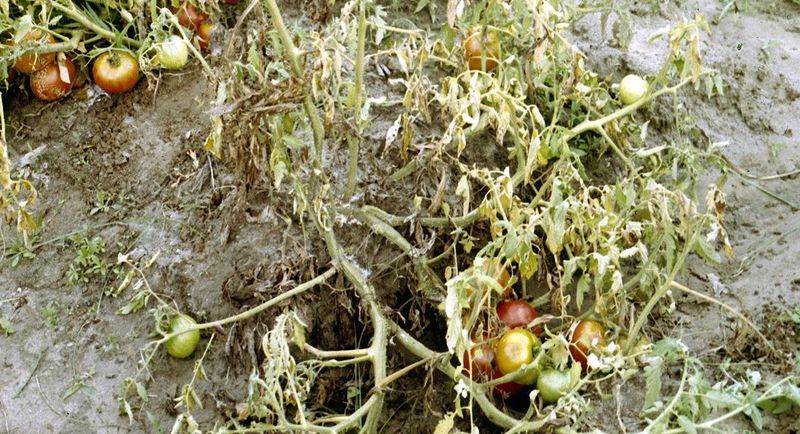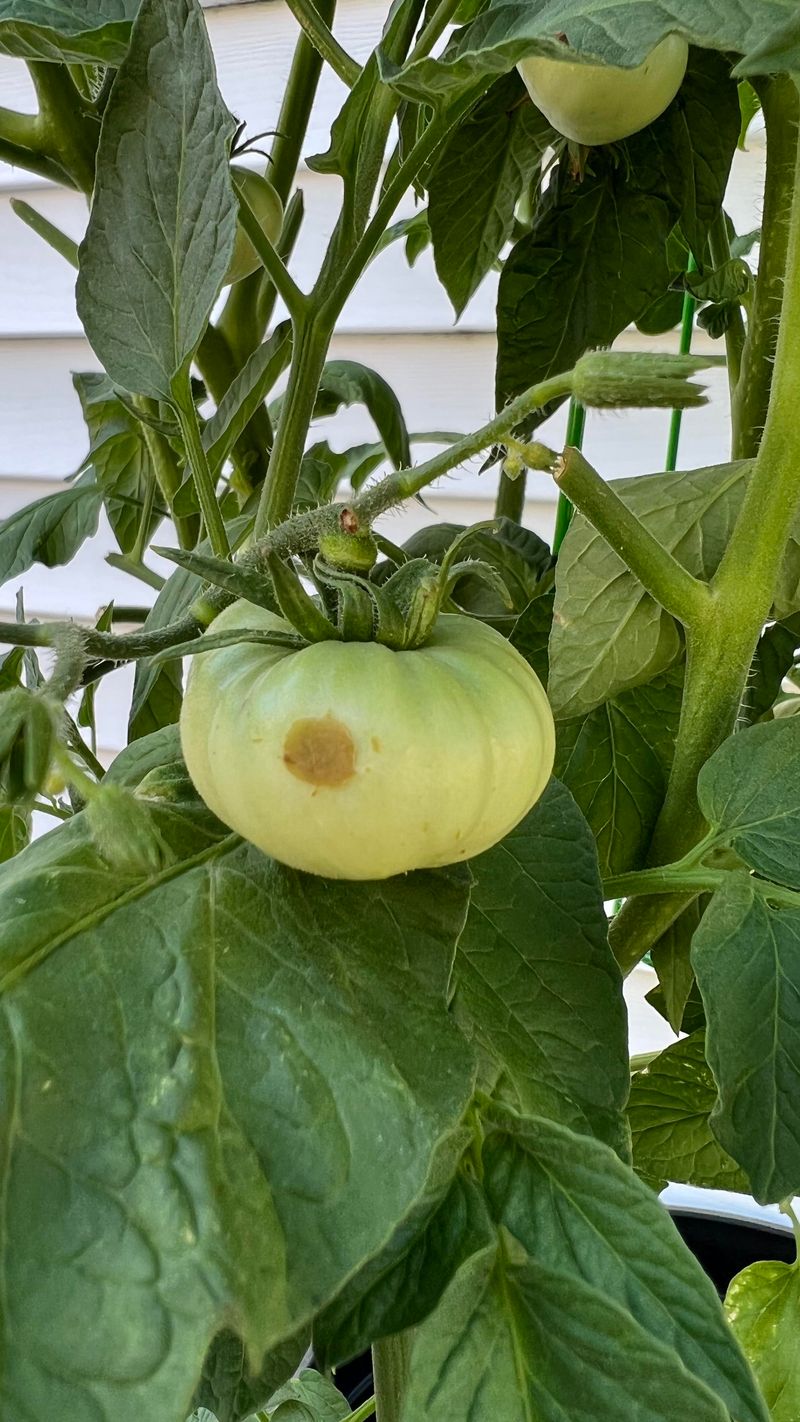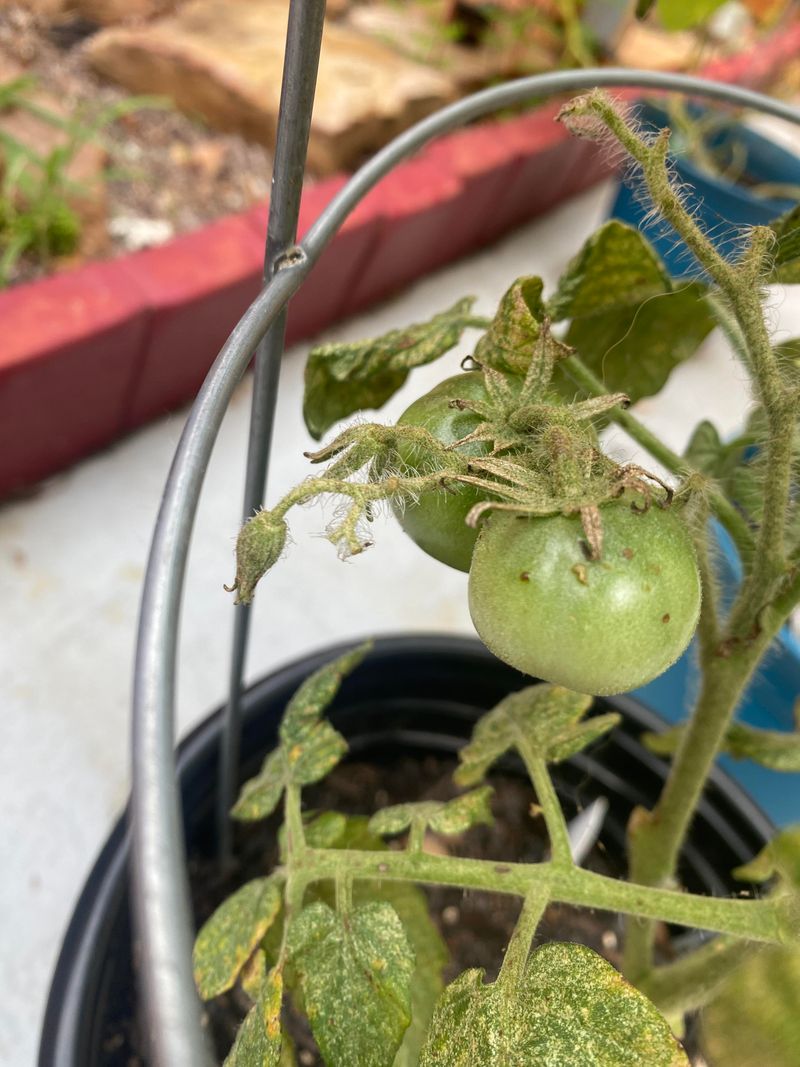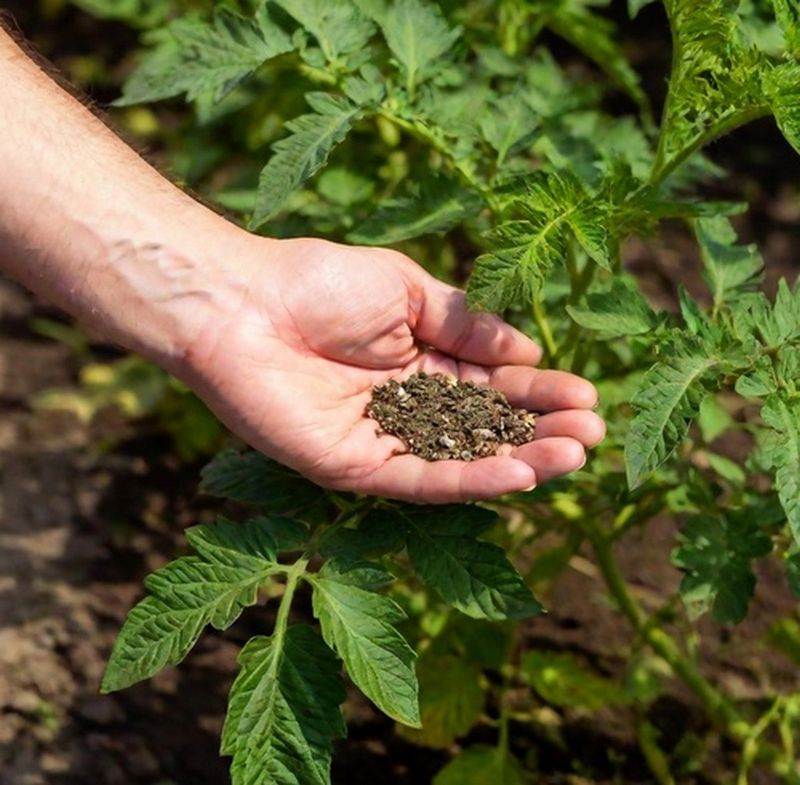Leaf curl on tomato plants can feel like a red flag waving in your garden—but it’s often a sign your plants just need a little extra care. Environmental stress, inconsistent watering, or even too much pruning can all cause leaves to twist or roll.
Sometimes it’s harmless—especially if the new growth looks healthy—but pests like aphids or diseases can also be the culprit. Check the undersides of leaves, watch for yellowing or sticky residue, and act quickly if you spot trouble.
To turn things around, keep watering steady, shade them from intense midday sun if needed, and go easy on fertilizers. A little balance can help your tomatoes straighten up and get back to growing strong.
1. Heat Stress Causes Upward Curling
When temperatures climb above 85°F, leaves often curl upward as a natural defense mechanism. I’ve watched my own plants do this during summer heatwaves – it’s their way of reducing water loss.
The leaf surface decreases when curled, limiting exposure to intense sunlight and hot air. Think of it as your plant’s version of putting up an umbrella.
While some curling on hot days is normal, persistent curling accompanied by yellowing signals that the heat stress has become severe enough to require intervention.
2. Inconsistent Watering Creates Stress
Fluctuating between bone-dry soil and sudden drenching confuses these sensitive plants. The roots struggle to adjust, sending stress signals that manifest as curling leaves.
During my first gardening season, I made this mistake repeatedly. One week I’d forget to water, then overcompensate the next – my tomatoes responded with dramatically curled leaves.
Water stress doesn’t just affect appearance; it impacts fruit development and makes plants more vulnerable to other problems like blossom end rot.
3. Herbicide Drift Creates Twisted Growth
Even trace amounts of herbicides can wreak havoc on sensitive tomato plants. The damage often appears as twisted, cupped leaves with unusual, distorted growth patterns unlike other causes of curling.
Last year, my neighbor sprayed his lawn on a windy day. Within 48 hours, my tomatoes showed classic herbicide damage – the new growth was grotesquely twisted while maintaining a deep green color.
Unfortunately, herbicide damage can’t be reversed, but plants may recover if the exposure was minimal and no additional drift occurs.
4. Aphid Infestations Cause Curling
These tiny sap-sucking insects cluster on the undersides of leaves, literally draining the life from your plants. As they feed, they inject toxins that cause leaves to curl and distort, creating perfect hiding spots.
Look closely at curled leaves – if you spot tiny green, black, or white specs moving around, you’ve found your culprits. I once ignored slight curling until I flipped a leaf and found dozens of aphids having a feast.
Beyond curling, aphids leave behind sticky honeydew that attracts ants and promotes sooty mold growth.
5. Viral Infections Show Distinctive Patterns
Viruses like Tomato Yellow Leaf Curl Virus (TYLCV) create unmistakable symptoms – leaves curl upward and inward while yellowing and remaining smaller than healthy foliage. The plants often appear stunted overall.
Unlike environmental stresses, viral symptoms typically start on newer growth and progressively work down the plant. I’ve learned to watch for the telltale yellow margins that accompany the curling.
Most concerning is how these viruses spread – whiteflies carry them between plants, meaning one infected tomato can threaten your entire garden.
6. Calcium Deficiency Affects New Growth
Without sufficient calcium, cell walls in new leaves can’t form properly, resulting in distorted, curled growth. The newest leaves are affected first, often showing hooked tips and irregular edges.
Many gardeners miss this diagnosis because calcium deficiency resembles other problems. In my community garden, several of us noticed curling until someone tested the soil and discovered extremely low calcium levels.
Beyond leaf symptoms, calcium-deficient plants typically develop blossom end rot on fruits – a sure confirmation that calcium is the underlying issue.
7. Broad Mite Damage Is Nearly Invisible
These microscopic pests cause disproportionate damage despite their tiny size. Infested leaves curl downward and develop a bronze or purplish hue that’s distinctive from other problems.
The frustrating part? Broad mites are virtually invisible to the naked eye. After battling unexplained curling for weeks, I finally confirmed their presence using a magnifying glass to spot their translucent bodies.
Their feeding damages growing tissue, so symptoms concentrate on the youngest leaves first, making them appear shrunken and misshapen while older leaves remain normal.
8. Excessive Nitrogen Creates Lush, Curled Foliage
Over-fertilizing with nitrogen pushes plants to produce abundant foliage at the expense of proper development. The leaves grow unusually large, dark green, and begin curling as they can’t support their excessive growth.
After applying high-nitrogen fertilizer to my container tomatoes, the leaves became almost leathery and started curling within days. The plants looked impressively lush but produced few flowers.
This problem frequently occurs when using manures or compost that hasn’t fully decomposed, releasing nitrogen surges that overwhelm tomato plants.
9. Install Shade Cloth During Heat Waves
Providing filtered light during intense heat reduces stress dramatically. A 30-40% shade cloth installed above plants blocks enough direct sunlight to lower leaf temperature without sacrificing essential light for growth.
My makeshift shade system using old bed sheets saved my crop during last summer’s record temperatures. Within two days, the previously curled leaves began relaxing and returning to normal positions.
For container plants, simply moving them to receive morning sun and afternoon shade often resolves heat-related curling without any additional equipment.
10. Establish Consistent Watering Schedule
Deep, regular watering encourages roots to grow downward rather than staying near the surface. Aim for 1-2 inches of water weekly, delivered at soil level rather than overhead.
Installing a simple drip irrigation system connected to a timer transformed my tomato garden. The plants receive exactly what they need, when they need it, without my forgetfulness creating stress cycles.
Adding a 2-3 inch layer of organic mulch around plants (keeping it away from stems) further stabilizes soil moisture, reducing the likelihood of stress-induced leaf curl.
11. Create Herbicide-Free Buffer Zones
Protecting tomatoes from chemical drift requires strategic planning. Planting tall barrier crops like corn or sunflowers around your tomato patch creates a living shield against airborne herbicides.
After my neighbor’s weed killer disaster, I installed a 6-foot lattice fence on our property line. It’s not completely herbicide-proof, but combined with talking to neighbors about spray schedules, it’s been effective.
For added protection, avoid using grass clippings as mulch if the lawn was treated with herbicides – these chemicals can persist and leach into your tomato soil.
12. Release Beneficial Insects For Aphid Control
Ladybugs and lacewings are voracious aphid predators that provide natural, chemical-free pest management. Releasing these beneficial insects creates a self-sustaining ecosystem in your garden.
My aphid problem disappeared completely after introducing lacewing larvae to my tomato patch. Unlike pesticides, these beneficial insects stick around, providing ongoing protection against future infestations.
For severe cases, an insecticidal soap spray works well as an initial treatment before releasing beneficial insects – just be sure to rinse the soap residue before introducing your garden helpers.
13. Remove And Destroy Virus-Infected Plants
Viral diseases can’t be cured once plants are infected. Swift removal prevents spread to healthy plants and eliminates the reservoir of virus that whiteflies could transmit.
When I identified TYLCV in my garden, removing the affected plants immediately saved the rest of my crop. It was heartbreaking to pull out plants I’d nurtured, but necessary to protect the others.
After removal, place infected plants in sealed bags for disposal – never compost them, as this could spread the virus throughout your garden in the future.
14. Apply Calcium Supplements Correctly
Crushed eggshells, bone meal, and commercial calcium products can resolve deficiency issues when applied properly. For immediate relief, foliar sprays containing calcium chloride or calcium nitrate work fastest, being absorbed directly through leaves.
My garden showed dramatic improvement after applying a combination approach – eggshells worked into the soil for long-term benefit and a foliar spray for quick relief. New growth emerged properly formed within a week.
For container tomatoes, adding crushed calcium antacid tablets to your watering can provides a quick calcium boost that helps prevent further leaf curling.
15. Treat Broad Mites With Sulfur Spray
Sulfur-based sprays effectively control these microscopic pests without harming beneficial insects. The fine powder disrupts the mites’ life cycle while being relatively gentle on plants.
After confirming broad mites in my garden, I applied a sulfur spray during the cooler evening hours to prevent leaf burn. Follow-up applications at 7-day intervals ensured newly hatched mites were eliminated before causing more damage.
A critical precaution: never apply sulfur when temperatures exceed 85°F or within two weeks of oil-based sprays, as this combination can severely damage plants.
16. Balance Fertilizer With Phosphorus And Potassium
Counteracting excessive nitrogen requires introducing competing nutrients. Applying a low-nitrogen, high-phosphorus fertilizer (like 5-10-10) helps restore balance and encourages flowering rather than leaf production.
After my nitrogen mishap, I watered thoroughly to leach some excess nitrogen, then applied a phosphorus-rich fertilizer. Within two weeks, the dark green curling leaves lightened to a healthier shade and new growth appeared normal.
For a natural approach, compost tea made from fully decomposed compost provides balanced nutrition without the nitrogen surge that chemical fertilizers can create.

